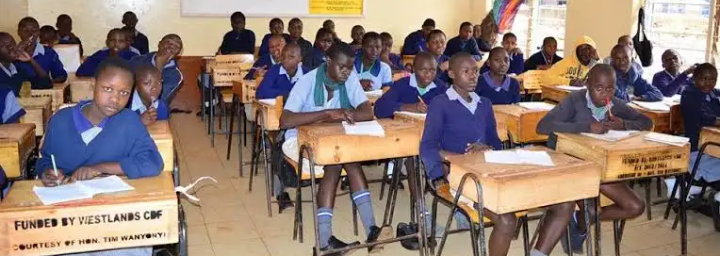
MoE: Minimum Results in Grade 4 & 5 KNEC Exams To Enable Entry of Learners Into Junior Secondary School
The results and performance in Grades 4 and 5 for the formative assessments which have been conducted by Kenya National Examination Council (KNEC) at different points will play a big role in determining the placement of the current pioneer Competency-based Curriculum (CBC) Grade six leaners’ to Junior Secondary Schools (JSS) come January 2023.
According to CBC Taskforce on Enhancing Access, Relevance, Transition, Equity and Quality for Effective Curriculum Reforms Implementation the report reveals that the mode of assessment in upper primary, that is, Grades 4, 5 and 6 will entail a combination of teacher-administered formative assessment which will account for 60 per cent of the total marks.
Formative Assessment is a school-based kind of assessment which starts from Grade 4 to 6 for the case of Upper Primary (and runs to Grade 12) whereby KNEC develops and uploads the tools for this kind of assessment on its website, and teachers are expected to download the tools from the website administers them to learners and finally upload the results to KNEC portal.
“Assessment in Upper Primary will align to a policy governing the balance between formative and summative to assess comprehensively the mastery of multifarious competencies of different learners as well as facilitate placement of learners in Junior Secondary School,” reads the report of the taskforce which was chaired Prof. Fatuma
In formative kind of assessment, leaners are assessed at each of the Upper Primary grades to track their learning progress ahead of the National Assessment at Grade 6 referred to as a summative assessment.
This implies that the current Grade 6 leaners are expected to sit for their summative assessment which will be administered by KNEC this November 2022, and will account for the remaining 40 per cent of the total score.
This will now mark the end of the primary education cycle under the new 2-6-6-3 education system. Performance of the learners at this level and their interests will be used to place them in JSS at Grade 7 in January 2023.
“The summative assessment is prompted by the need to allow learners from across the country to access schools which have superior infrastructure and a culture of good performance, thus enhancing equity,” adds the taskforce report.
The learners will sit for their national assessment by KNEC at Grade 9 in 2025 where they will formerly be completing JSS, and their scores and preferences being used for placement in Senior Secondary School (SSS) at only teachers who scored a mean grade of C+ in the Kenya Certificate for Secondary Examination (KCSE) would be promoted to teach in secondary schools, even if they were degree holders.
Grade 10 in 2026 where they will follow one of their preferred career pathways.
Push and Pull over JSS
According to Chege report, the JSS Grades 7, 8 and 9 will be domiciled in the Secondary Schools since it is JSS that learners will need to deepen their understanding of the broad CBC curriculum and choose the Pathways and Tracks to follow in SSS.
The Chege-led team argued that the Primary School level lacks capacity, both in human resource and infrastructure (especially for teaching sciences), to facilitate the expected depth of engagement with the JSS CBC content.
Further, domiciling JSS at Secondary School level will optimize teacher utilization as they will teach at both Junior and Senior Secondary school levels, a recommendation that is aligned to other countries within the East African Community and international best practices.
However, the taskforce made provisions for primary schools that have adequate infrastructure to establish a JSS and for this case, develop a framework to facilitate sharing and management of infrastructure among primary and secondary schools that will be established in the same compound.
The taskforce also recommended merger of under-enrolled primary schools, in close proximity, and improve the infrastructure in one to create a JSS; and review the Secondary Education Placement guidelines to provide clear criteria, including the use of assessments for placement of learners in JSS.
Last year December, over 8,000 teachers during the Kenya Primary School Head Teachers’ Association (KEPSHA) annual conference resolved to push to have grades 7, 8, and 9 domiciled in primary schools noting that they have the capacity to oversee the JSS.
Their proposal came after the Teachers Service Commission (TSC) appears to place a caveat on primary school teachers, who can be promoted to teach in secondary schools whereby the Commission maintained that.
